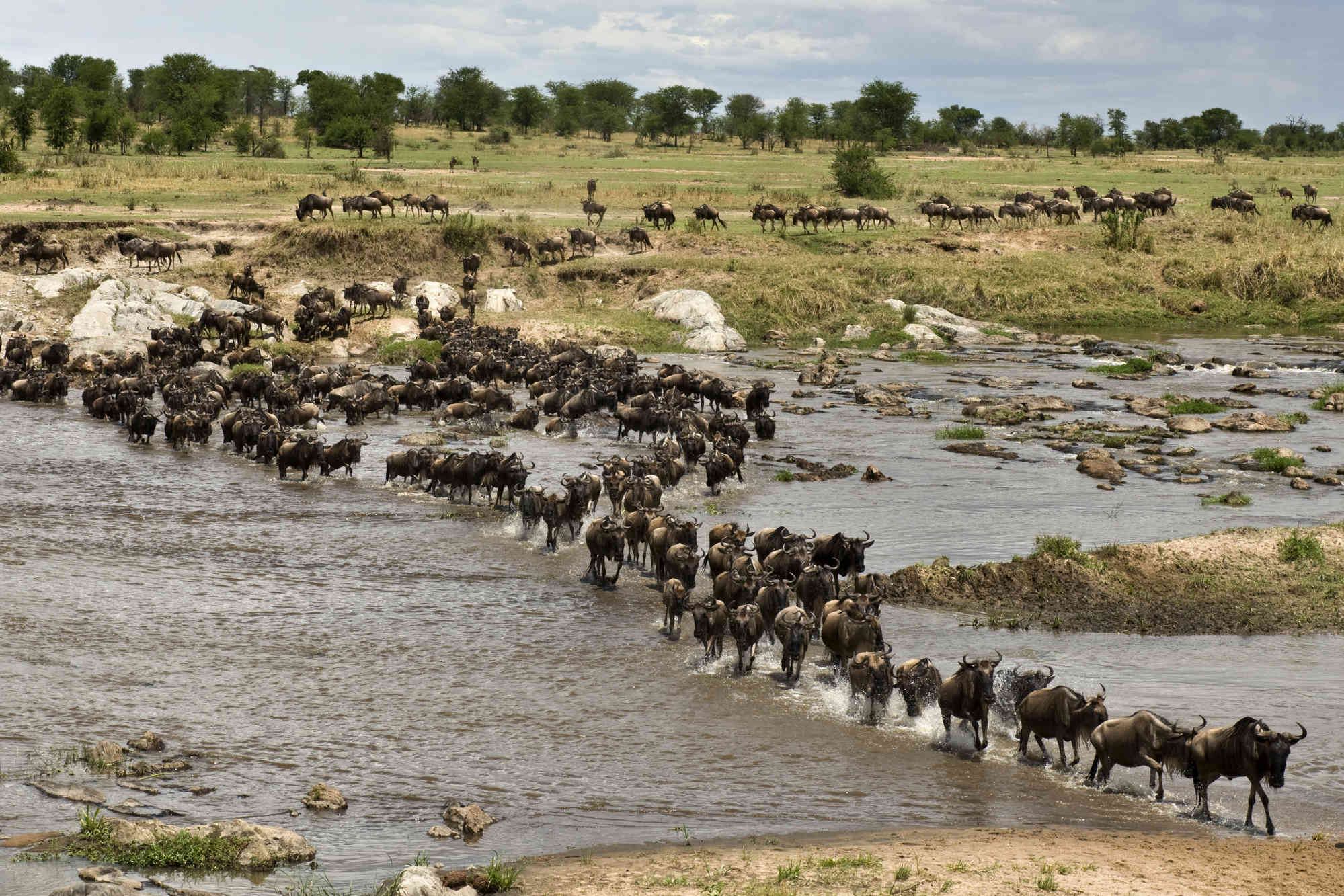Thus, tourists wishing to experience these rare natural phenomena must undertake some detours. The first places they will be able to focus on are Kenya and Tanzania. This annual wildebeest migration is an epic event not to be missed. More than two million animals, including wildebeest, zebras, and antelopes, migrate from the Serengeti National Park ►
Thus, tourists wishing to experience these rare natural phenomena must undertake some detours. The first places they will be able to focus on are Kenya and Tanzania. This annual wildebeest migration is an epic event not to be missed. More than two million animals, including wildebeest, zebras, and antelopes, migrate from the Serengeti National Park in Tanzania to Kenya for the Masai Mara National Reserve. They go there searching for green pastures, but it also marks the moment of mating that usually results in the birth of nearly half a million wildebeest. During this trek, the spectacle is incredible at the time of the crossing of the Mara River by wildebeest and zebras. The best time to see this scenery is between July and October. Otherwise, the calving season also begins in December and continues until March. Thousands of wildebeest then give birth to their young in synchronized childbirth. In Botswana, the zebra migration includes a journey of more than 1,000 km by thousands of zebras each year. The journey takes place between the floodplains of the Chobe River and the surrounding area during the dry season from July to November to the grasslands of Nxai Pan National Park during the rainy season from December to February. Zebras extend their journey to Nxai Pan for approximately 80 days before returning to Chobe in March. Therefore, March to October is the best time to witness this event. In North America, travelers can visit Canada to see the long journey of polar bears, also known as the Lords of the Arctic. Every year, from October to November, thousands of polar bears gather in the Churchill area of Manitoba to await the big frost. Then they head to Hudson Bay for winter seals, the hunting season. However, tourists can also visit during the polar bear calving season in August or September. They may see mothers and their polar bear cubs. Further afield in Mexico is the migration of whale sharks to the Yucatan Peninsula. It begins off Holbox Island on the north coast of the Mexican peninsula, and these marine animals are found at this specific point to feed on microscopic plankton, krill, and other small fish. Moreover, they are harmless to humans and are known to travel nearly 6,000 km to reach the Yucatan Peninsula. For this visit, travelers must book their vacation during July and August. In addition, there is also the migration of monarch butterflies that takes place every year in Southern California and Mexico. They travel to these countries to escape the cold winter months of North America and Canada. They span nearly 3,000 miles each year to find refuge in these places. As such, a Monarch Butterfly Biosphere Reserve can be visited during January and February. On the Asian side, there is a big gathering of elephants in Sri Lanka every year. These forest giants meet at Minneriya National Park to enjoy the abundant water and lush green grass. Also known as The Gathering, at least 300 elephants join in the dry season to eat, socialize, play, drink, and mate. This magnificent spectacle can be enjoyed between June and September. Those who are big bird lovers can take the opportunity to make a jump to Habarana and visit the rock of Sigiriya while observing these little beasts. Antarctica has the famous penguin march, honored with the emperor penguins\' voyage. During this period, they go inland to hunt, feed and lay their young. Tourists can observe them in their natural habitat while they play, feed, and travel with their families. The show\'s highlight then ends with thousands of baby penguins hatching, and travelers must go there from November to December. ◄
